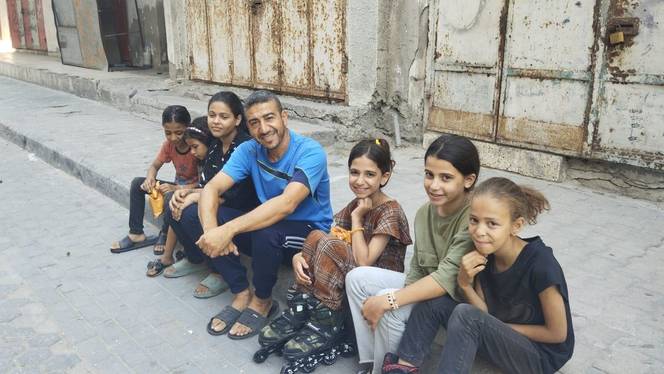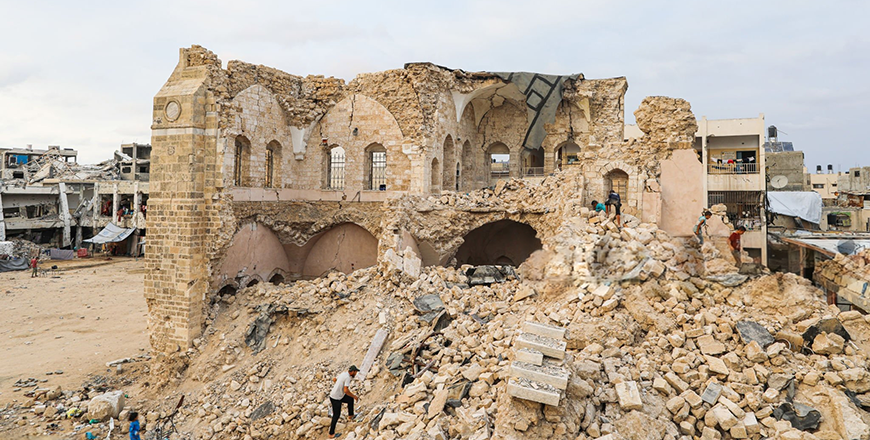
In the Shati Camp novelist well-known Yousri Alghoul is determined to rebuild his library that was decimated along with his house by an Israeli airstrike.
Alghoul’s turned his personal library of about 3,000 books, into a “community space” in his home in 2022. The library was hit by an Israeli airstrike in the fall of 2023, and he lost his home and his precious books.
“Most of these books were literary works….novels and short stories and poems,” he tells Arablit Quarterly, adding that however, he is not giving up.
Undeterred, Alghoul today is trying to rebuild his library to its former status and has started a fundraising campaign on GoFundMe to buy books according to TRT.
“My vision is to create a community library for refugees in my community in North Gaza that stands as a testament to our resilience and culture, and our unwavering belief in the power of knowledge.”
Today his name is trending on the social media as a novelist who will not be deterred despite the death and destruction meted out by the Israeli army on the Gaza population and communities.
Today he leads informal poetry workshops for children, encouraging them to express their experiences despite the dire circumstances. Over 80% of Gaza’s schools have been damaged or destroyed, but the young poets continue to write.
Notable works include those from: Raouf Yousri Abdel Raouf Al Ghoul (12 years old): “I am a broken-necked bird, My existence among the rubble.” Mahmoud Al Hanawi (10 years old): “The birds of the sky wept, and the stars in the sky faded…”
On 13 July 2024, barely two weeks after mentoring the children, Alghoul’s friend was killed in an Israeli airstrike on the Shati camp, and injuring him. He remains in a hospital but the young poets of Gaza are safe. They continue writing poems to bear witness to the war in Gaza.
Israeli airstrikes have deliberately targeted most universities, colleges, and schools in Gaza. According to the United Nations, more than 80 percent of Gaza’s schools have been damaged or destroyed since October 7, 2023.
The UN reports over 16,000 Palestinian children have been killed, more than 34,000 injured, and 17,000 orphaned. Gaza’s water capacity has plummeted by 94%, leading to severe shortages and a rise in waterborne diseases, including polio. Famine has also intensified due to the destruction of agriculture and delays in humanitarian aid according to the Quds News Network.

 donate & share
donate & share 

 (@Mhmmd_Jordan)
(@Mhmmd_Jordan) 





